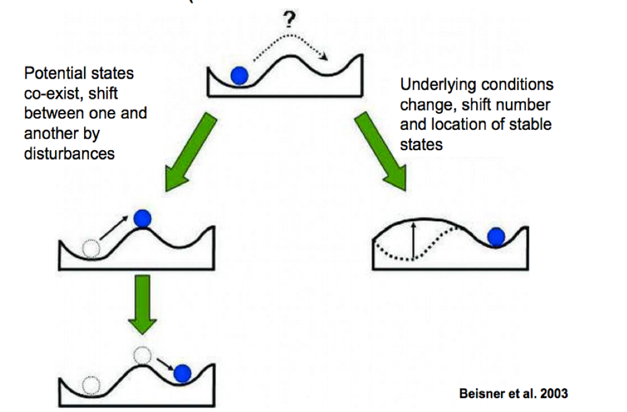Based on the presentation “Fixing our dam mistakes: Restoration potential in the Grand Canyon and Glen Canyon” by Julia Michaels
Large dams are often pointed to as examples of what people can accomplish when they come together. These dams are a source of 'clean' energy and can store water for urban and agricultural use. And although clean energy and water storage is important, this can come at a great cost to the original environment and ecosystems of the surrounding areas. The Glen Canyon Dam is a prime example of this: its creation of Lake Powell (second largest reservoir in the US) has created unintended damage to the habitat of both Glen Canyon and the Grand Canyon that may be irreversible.
The motivation to build the Glenn Canyon dam was to protect Hoover dam downstream from siltation, to supplement its ability to provide flood control and carry-over water storage in times of drought. The Glen Canyon Dam was built at a cost of 986 million dollars (adjusted for inflation). Along with it came the ability to store about 26 million acre feet of water and potentially generate about 3.5 billion kWh of electricity, although it actually only produces at ¼ its power capacity. But the dam did not just store water and generate power, it also trapped large amounts of sediment, 100 million tons annually. In addition to effecting the wild life, Glen Canyon was home to two small human settlements that were submerged by the reservoir. The disturbance of the flooding cycle also affected the Grand Canyon’s water quality. This allowed for invasive species to populate the Grand Canyon, such as the rainbow trout, making it more difficult for the native humpback chub to survive.
Restoration efforts in the Grand Canyon are largely focused on targeting specific native species to protect and alien species to control. This has involved removing invasive (non-native) species such as tamarisk trees. Other restoration efforts have included High Flow Experiments (HFE) which release large pulses of cold water over a few days in order to restore at least some of the natural habitat in the Grand Canyon. These experimental flood events have had mixed results: Initially, some sandbars were restored, but they were mostly eroded away after 6-12 months. The pulses also improved the habitat for the invasive rainbow trout while having little effect on the humpback chub.
Some environmentalists have long advocated of eventual removal of the Glen Canyon Dam, draining Lake Powell and removing the underlying conditions that limit restoration in Glenn and Grand Canyon. But the mixed results from the HFE should force us to question: will removing the dam and increasing the flood water flow restore the natural conditions that favor native species? This is where the theory of “alternative stable states” comes into play.

Ecologists have suggested that a change in environmental variables can lead from one stable state to another. This theory can be illustrated by the figure above, from B.E. Beisner. Once another stable state has been achieved, the processes may be irreversible. For example, if the change in flow rate of the water made it more difficult for a species of fish to procreate, then over time, the population of this fish will decrease, perhaps to the point where even if the flow rate was reversed to a favorable state the fish population would not be able to recover. This theory exemplifies the need to not only understand what methods of restoration are possible, but also what methods will be effective, and at what cost.
The current restoration methods of ongoing removal of invasive species and monitoring of native species seems like a good middle ground between allowing all the negative changes induced by Glen Canyon Dam, and removing the dam completely. But a drained Lake Powell may make predicting the outcomes of restoration efforts more difficult. The Glen Canyon Dam was made with good intentions, and it still provides clean water and energy to many people. Perhaps the most important thing to learn from the Glen Canyon Dam is that we need to be more conscious of environmental factors before we build huge projects and structures.
